Details, details
What speaks to you when you look at art? Is it the medium? Is it the design? Is it shape or ![Chihuly_at_Kew_Gardens_043[1] (640x480)](https://blog.itscactus.com/wp-content/uploads/2012/09/Chihuly_at_Kew_Gardens_0431-640x480-150x150.jpg)
![the-girl-with-a-pearl-earring-johannes-vermeer-t14769[1] (354x500)](https://blog.itscactus.com/wp-content/uploads/2012/09/the-girl-with-a-pearl-earring-johannes-vermeer-t147691-354x500-150x150.jpg) color or pattern? All of those elements play their part, to be sure. Still, my guess is that when you look at a piece of art, whether it’s a 17th century painting by Jan Vermeer, or a contemporary piece of glasswork by Dale Chihuly, or a piece of Haitian folk art by Jean Eugene Remy, it is the details that draw you in.
color or pattern? All of those elements play their part, to be sure. Still, my guess is that when you look at a piece of art, whether it’s a 17th century painting by Jan Vermeer, or a contemporary piece of glasswork by Dale Chihuly, or a piece of Haitian folk art by Jean Eugene Remy, it is the details that draw you in.
Take for example this one-of-a-kind piece. Jean Eugene has whimsically imagined this bus going to market. Unencumbered by proportion, the round bus goes bumping through the countryside, dodging low-flying birds. The youth riding on top points the way as he reclines against a box and a 3-D basket containing a chicken and various produce. The dimensional ![ht01387[1]](https://blog.itscactus.com/wp-content/uploads/2012/09/ht0138711.jpg) effect of the basket is achieved by cutting the contents backwards as a side piece and then bending the metal tightly behind the slitted, concave basket. A little bit more time spent in execution, but the result is good visual impact. A fine detail
effect of the basket is achieved by cutting the contents backwards as a side piece and then bending the metal tightly behind the slitted, concave basket. A little bit more time spent in execution, but the result is good visual impact. A fine detail
Look again. Notice that all of the passengers vary somewhat. Different hats, different clothing, different fullness in the face, longer hair, shorter hair. Individual characteristics that give the riders character. Clones don’t ride the bus, people do. Details.
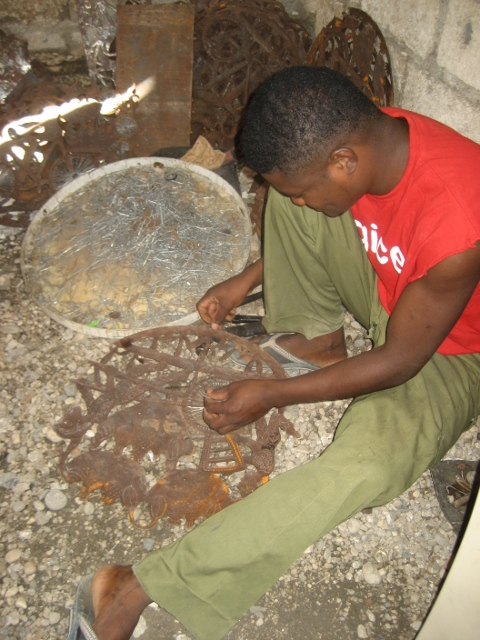 And the bus itself. Notice how small caps have been hand-riveted on the front end as headlights. Clever. The wheels, however, are the coup d’grace. They revisit vintage wire wheel hubcaps on Corvettes and Cadillacs, 1968-1982. (Yes, I looked it up, and by-the-way, you can find them on ebay for about $1250, if you’re in the market.) Jean Eugene innovatively uses spout caps and rivets and wire hooks, which are bent one at a time to create each spoke. Fifty-seven in the back and sixty-three in the front. Talk about detail!
And the bus itself. Notice how small caps have been hand-riveted on the front end as headlights. Clever. The wheels, however, are the coup d’grace. They revisit vintage wire wheel hubcaps on Corvettes and Cadillacs, 1968-1982. (Yes, I looked it up, and by-the-way, you can find them on ebay for about $1250, if you’re in the market.) Jean Eugene innovatively uses spout caps and rivets and wire hooks, which are bent one at a time to create each spoke. Fifty-seven in the back and sixty-three in the front. Talk about detail!
This kind of craftsmanship is not unique to one artist alone, though Jean Eugene does raise the bar. Bicycle chain, metal tubes, coins, spikes and more have been utilized with good effect as design elements in Haitian metal sculpture across the board. Next time you look, really look. The more you see, the more you will appreciate. It’s in the details.

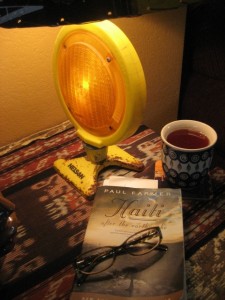 Book report time! Anyone? Ok, I’ll go first. I’m reading a new book by Paul Farmer, UN Deputy Special Envoy for Haiti and Chair of the Department of Global Health and Social Medicine at Harvard Medical School. In 1987, Dr. Farmer, along with several colleagues, founded Partners in Health, an organization dedicated to serving the health care needs of the poorest of the poor. He has worked tirelessly as an advocate for health services as a basic human right and has actively promoted and provided health care in Haiti for decades. His latest book, “Haiti after the Earthquake” gives a superb account of the situation in pre-quake Haiti, the cataclysmic event itself, and the aftermath. Most valuably, Dr. Farmer gives a forthright assessment of what went right and what has failed in the international attempt to help Haiti “build back better.”
Book report time! Anyone? Ok, I’ll go first. I’m reading a new book by Paul Farmer, UN Deputy Special Envoy for Haiti and Chair of the Department of Global Health and Social Medicine at Harvard Medical School. In 1987, Dr. Farmer, along with several colleagues, founded Partners in Health, an organization dedicated to serving the health care needs of the poorest of the poor. He has worked tirelessly as an advocate for health services as a basic human right and has actively promoted and provided health care in Haiti for decades. His latest book, “Haiti after the Earthquake” gives a superb account of the situation in pre-quake Haiti, the cataclysmic event itself, and the aftermath. Most valuably, Dr. Farmer gives a forthright assessment of what went right and what has failed in the international attempt to help Haiti “build back better.”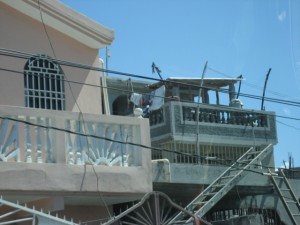
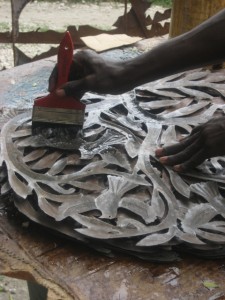 People who buy metal sculptures for the first time often ask: “Is there any care and upkeep involved with this?” Reasonable to wonder, heaven knows. We advertise that they are perfectly suitable indoors and out, but it’s obvious to anyone that’s left their bicycle out in the rain or forgotten garden tools by the sprinkler head that metal will, of course rust. Surface scratching can also occur, for instance if you are storing or stacking pieces. However, neither rust nor scratches are anything that a little clear coat application can’t correct with good result.
People who buy metal sculptures for the first time often ask: “Is there any care and upkeep involved with this?” Reasonable to wonder, heaven knows. We advertise that they are perfectly suitable indoors and out, but it’s obvious to anyone that’s left their bicycle out in the rain or forgotten garden tools by the sprinkler head that metal will, of course rust. Surface scratching can also occur, for instance if you are storing or stacking pieces. However, neither rust nor scratches are anything that a little clear coat application can’t correct with good result.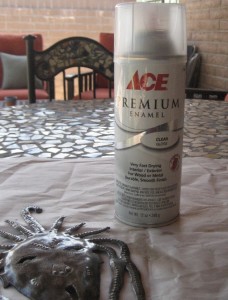
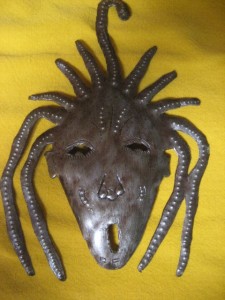 So, not that this would EVER happen to you, but if it did, do not despair. In each case, I waited until the misapplication had dried completely. Then, using first medium-coarse sandpaper and then a fine steel-wool, I removed the black/splotched/excessive coat. Finally, exercising a careful assessment of the cap color, the likelihood of imminent cloudburst, and localized bee activity, I proceed as directed on the label of the can. Quite simple, really.
So, not that this would EVER happen to you, but if it did, do not despair. In each case, I waited until the misapplication had dried completely. Then, using first medium-coarse sandpaper and then a fine steel-wool, I removed the black/splotched/excessive coat. Finally, exercising a careful assessment of the cap color, the likelihood of imminent cloudburst, and localized bee activity, I proceed as directed on the label of the can. Quite simple, really.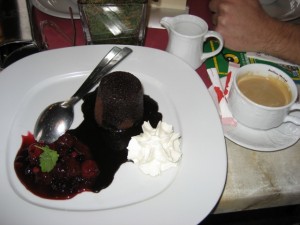 This is just my opinion, mind you, and maybe it’s really just me. But I think art acquisition ranks right up there with food and sex in terms of hedonistic drives. Anybody else? So why is that? What triggers that first impulse to buy art? And then what makes us feel compelled to buy more? When does the act of purchasing a single piece of art become a full-on libertine pursuit? And if we are so driven, how do we pursue it as gourmands, and not gluttons?
This is just my opinion, mind you, and maybe it’s really just me. But I think art acquisition ranks right up there with food and sex in terms of hedonistic drives. Anybody else? So why is that? What triggers that first impulse to buy art? And then what makes us feel compelled to buy more? When does the act of purchasing a single piece of art become a full-on libertine pursuit? And if we are so driven, how do we pursue it as gourmands, and not gluttons?
![5596[2]](https://blog.itscactus.com/wp-content/uploads/2012/08/559625-156x300.jpg)
![sm413[1]](https://blog.itscactus.com/wp-content/uploads/2012/08/sm41311-133x300.jpg) When a sculpture is selected to be sold in the Beyond Borders catalogue or on our website, we photograph it, give it an inventory number, and a name. This one, for what may be obvious reasons, we chose to name “Double Trouble.” The impish looks on these faces, the hair standing on end, the shape of the mouths – all of that said, “Uh-oh” to us. “Double Trouble,” absolutely. It’s cute, it’s catchy. Maybe someone with twins will buy it.
When a sculpture is selected to be sold in the Beyond Borders catalogue or on our website, we photograph it, give it an inventory number, and a name. This one, for what may be obvious reasons, we chose to name “Double Trouble.” The impish looks on these faces, the hair standing on end, the shape of the mouths – all of that said, “Uh-oh” to us. “Double Trouble,” absolutely. It’s cute, it’s catchy. Maybe someone with twins will buy it.![image005(231)[1]](https://blog.itscactus.com/wp-content/uploads/2012/08/image0052311-220x300.jpg)
![images[1]](https://blog.itscactus.com/wp-content/uploads/2012/08/images1.jpg) They successfully grafted the leg of a recently dead black man onto a disabled white man, who was thus able to walk again.
They successfully grafted the leg of a recently dead black man onto a disabled white man, who was thus able to walk again.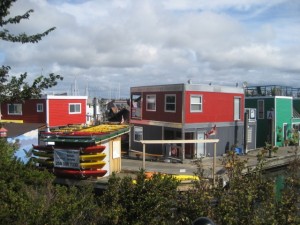 Summertime is vacation time for many of us, and as my family lives in a place to which people escape winter’s wrath, it’s probably no surprise that we chose to migrate northward as the summer’s heat became too intense for general tolerance. We set off for Victoria, British Columbia but, of all things, by the second day there, I was reminded of Haiti.
Summertime is vacation time for many of us, and as my family lives in a place to which people escape winter’s wrath, it’s probably no surprise that we chose to migrate northward as the summer’s heat became too intense for general tolerance. We set off for Victoria, British Columbia but, of all things, by the second day there, I was reminded of Haiti. I thought how pleased he would be to see his art so perfectly set in this beautiful place. It tickled me later when I re-read the letter he wrote to Beyond Borders accompanying a sample of this very design. He said, “I take this moment extraordinary to introduce to you my model of fish. I think you and your friends are going to like it very much.” He was so right! Haitian art is as perfectly at home at the beach on the Caribbean Sea as it is along the Straits of San Juan in the North Pacific.
I thought how pleased he would be to see his art so perfectly set in this beautiful place. It tickled me later when I re-read the letter he wrote to Beyond Borders accompanying a sample of this very design. He said, “I take this moment extraordinary to introduce to you my model of fish. I think you and your friends are going to like it very much.” He was so right! Haitian art is as perfectly at home at the beach on the Caribbean Sea as it is along the Straits of San Juan in the North Pacific.
![sm421[1]](https://blog.itscactus.com/wp-content/uploads/2012/08/sm4211-150x150.jpg) And I thought again of Haitian sculptors, this time, Jimmy Prophet and Willie Juiene, whose artful eyes and exacting hands re-fashion Nature’s work so elegantly in steel. The monochrome of the metal they work focusses one’s attention to form and line, and emphasizes the refined precision of the artists’ touch. These men have never seen Buchart Gardens nor are they likely
And I thought again of Haitian sculptors, this time, Jimmy Prophet and Willie Juiene, whose artful eyes and exacting hands re-fashion Nature’s work so elegantly in steel. The monochrome of the metal they work focusses one’s attention to form and line, and emphasizes the refined precision of the artists’ touch. These men have never seen Buchart Gardens nor are they likely  to, but flowers and trees that serve as
to, but flowers and trees that serve as ![2175[1]](https://blog.itscactus.com/wp-content/uploads/2012/08/21751-150x150.jpg) their inspiration are miracles of design no matter where they bloom and flourish. In Haiti, as in Canada, the miracle is the same.
their inspiration are miracles of design no matter where they bloom and flourish. In Haiti, as in Canada, the miracle is the same.![images[4]](https://blog.itscactus.com/wp-content/uploads/2012/08/images4.jpg) Poor countries have a generally have tough time in Olympic competition. There are exceptions, of course, but the powerhouses generally are big countries with big populations and big budgets for international athletics. In this year’s Olympics, it is not surprising that the greatest number of medals is currently around the necks of athletes from United States and China. Yet the athletes of smaller countries compete fiercely and with pride, doing their best to bring honor and glory to their respective homelands in the name of sport.
Poor countries have a generally have tough time in Olympic competition. There are exceptions, of course, but the powerhouses generally are big countries with big populations and big budgets for international athletics. In this year’s Olympics, it is not surprising that the greatest number of medals is currently around the necks of athletes from United States and China. Yet the athletes of smaller countries compete fiercely and with pride, doing their best to bring honor and glory to their respective homelands in the name of sport.![2487[1]](https://blog.itscactus.com/wp-content/uploads/2012/08/248711-300x155.jpg)
![ecu8057[1]](https://blog.itscactus.com/wp-content/uploads/2012/07/ecu805711-196x300.jpg)
 That’s how mine looked, the day it was given to me. A beautiful shigra with bold geometric patterns, animals, trees, numbers, and letters in pink, red,orange, brown and black and two long fiber straps. Two days later, however, it had been altered by my dog, who decided to add a little fiber to her diet, I guess. She had a mouthful and my straps were a tattered mess. I said, “Oh no, no, no, you naughty Little Darling,” or maybe something a tiny bit stronger, and saved what I could. I retied the ends and that worked well enough for a while, but admittedly, they were a little short. Eventually I replaced them entirely with leather. This was at no small expense, but in all honesty, I think it was worth the price. The new handles nicely preserve the integrity of my shigra and I happily carry a fantastically functional and fashionable Andean textile everywhere I go. My basset hound too, is pleased with my shigra’s stylish utility and she is very glad she didn’t eat the whole thing after all.
That’s how mine looked, the day it was given to me. A beautiful shigra with bold geometric patterns, animals, trees, numbers, and letters in pink, red,orange, brown and black and two long fiber straps. Two days later, however, it had been altered by my dog, who decided to add a little fiber to her diet, I guess. She had a mouthful and my straps were a tattered mess. I said, “Oh no, no, no, you naughty Little Darling,” or maybe something a tiny bit stronger, and saved what I could. I retied the ends and that worked well enough for a while, but admittedly, they were a little short. Eventually I replaced them entirely with leather. This was at no small expense, but in all honesty, I think it was worth the price. The new handles nicely preserve the integrity of my shigra and I happily carry a fantastically functional and fashionable Andean textile everywhere I go. My basset hound too, is pleased with my shigra’s stylish utility and she is very glad she didn’t eat the whole thing after all.![2522[1]](https://blog.itscactus.com/wp-content/uploads/2012/07/25221-290x300.jpg) Haiti is inspirational. It’s colorful and it’s filled with amazing people that possess incredible vibrancy and joy of spirit. Their ability to produce wonderful art, to continually create and re-create and innovate is a phenomenal. But it’s a tough, tough place. That’s why, no matter how tired we are of hearing about suffering and hardship and chaos and disaster, we have to listen and confront the realities of those who struggle just to survive from one day to the next in Haiti and elsewhere around the globe.
Haiti is inspirational. It’s colorful and it’s filled with amazing people that possess incredible vibrancy and joy of spirit. Their ability to produce wonderful art, to continually create and re-create and innovate is a phenomenal. But it’s a tough, tough place. That’s why, no matter how tired we are of hearing about suffering and hardship and chaos and disaster, we have to listen and confront the realities of those who struggle just to survive from one day to the next in Haiti and elsewhere around the globe.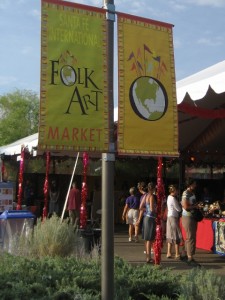 o how was it? Being there for the dual purposes of A) supporting the worthy goals of the Market and B) personal acquisition, I can tell you without reservation, it was GREAT! The high quality of the art and the variety of goods available is incredible. Plus, it’s such a treat – not to mention an education – to meet the artists. In many cases, there is the additional opportunity to see them demonstrate their craft. Throw in the chance to participate in an event that last year generated $17,300/booth for the artists to take home to their families and communities and WOW, you’ve got plenty to feel good about.
o how was it? Being there for the dual purposes of A) supporting the worthy goals of the Market and B) personal acquisition, I can tell you without reservation, it was GREAT! The high quality of the art and the variety of goods available is incredible. Plus, it’s such a treat – not to mention an education – to meet the artists. In many cases, there is the additional opportunity to see them demonstrate their craft. Throw in the chance to participate in an event that last year generated $17,300/booth for the artists to take home to their families and communities and WOW, you’ve got plenty to feel good about.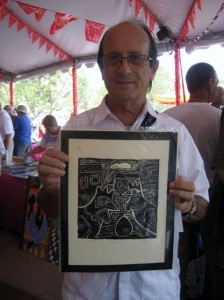
 NEXT TIME – for this has become a July tradition for me ranking right up there with fireworks on the Fourth – I will definitely purchase the early admission tickets again, if not go to the Market Opening Party on Friday night. You pay more for these – in the case of the Opening Party, quite a lot more. However, with the Market’s increasing popularity has come increasing crowds. That’s good in the Big Picture, but from a shopping standpoint, this means that by 10:00 and lasting until about 4:00 on Saturday, the booths do
NEXT TIME – for this has become a July tradition for me ranking right up there with fireworks on the Fourth – I will definitely purchase the early admission tickets again, if not go to the Market Opening Party on Friday night. You pay more for these – in the case of the Opening Party, quite a lot more. However, with the Market’s increasing popularity has come increasing crowds. That’s good in the Big Picture, but from a shopping standpoint, this means that by 10:00 and lasting until about 4:00 on Saturday, the booths do 
 become quite congested. From 4:00 until closing time at 6:00, it slows down and the tents become more navigable once again. Sunday, the second and final day, gets pretty reasonable after lunch, ” they say.” The risk there is that many of the “goodest goods” are long gone. Who wants to be saying “Coulda…shoulda…woulda,” at the end of the Market and still have money left in their pocket, begging to be spent? Not ME!
become quite congested. From 4:00 until closing time at 6:00, it slows down and the tents become more navigable once again. Sunday, the second and final day, gets pretty reasonable after lunch, ” they say.” The risk there is that many of the “goodest goods” are long gone. Who wants to be saying “Coulda…shoulda…woulda,” at the end of the Market and still have money left in their pocket, begging to be spent? Not ME!